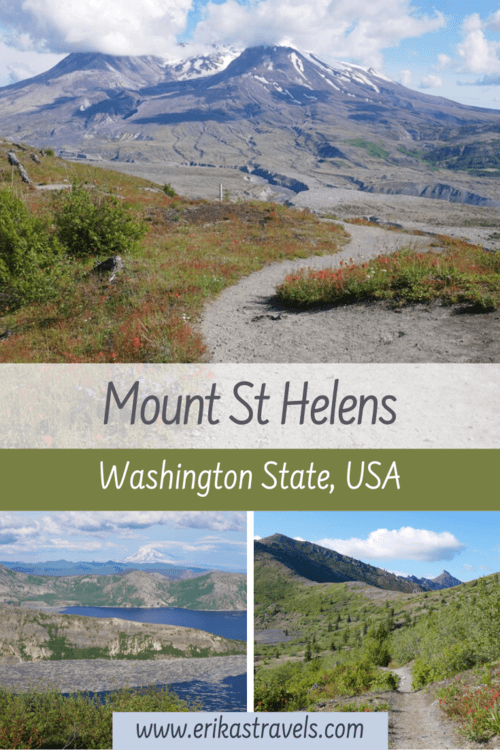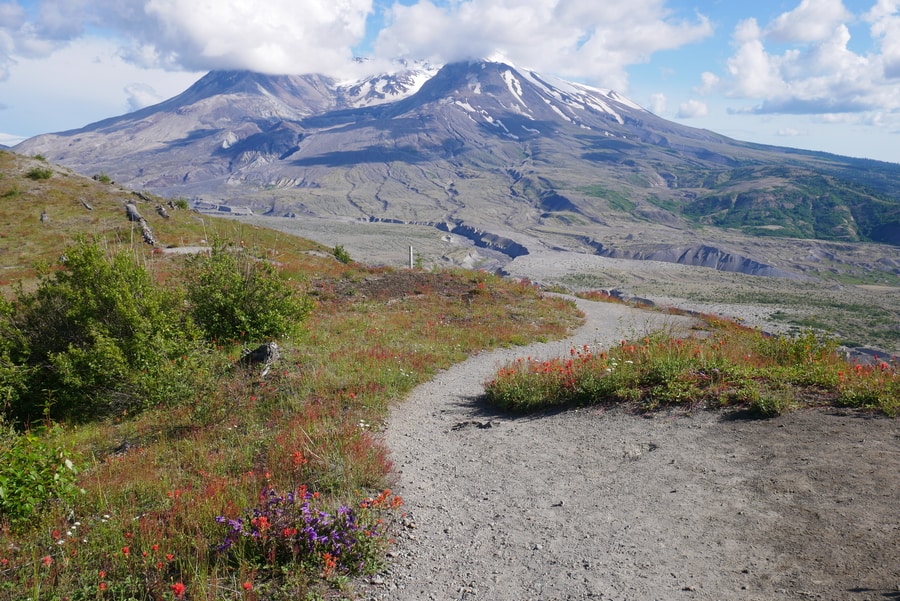
Day Trip to Mount St Helens National Monument
Four decades ago, Mount St Helens unleashed the most destructive eruption in modern US history. The volcano’s explosion expelled 520 million tons of ash that darkened the skies above Washington State. The plumes of smoke traveled eastward nearly 2,000 miles across the country—leaving a blanket of ash in their wake.
The eruption of Mount St Helens created the largest debris avalanche in recorded history. It killed 57 people in its path, and wiped away much of the mountain’s northern face.
Today—forty years after the explosion forever changed the appearance of one of Washington State’s most iconic peaks—the national monument is a beloved Pacific Northwest attraction. It makes for a fantastic weekend getaway, and is a popular day trip destination for travelers from Portland and Seattle.
MOUNT ST HELENS DAY TRIP FROM SEATTLE OR PORTLAND
Mount St Helens National Monument lies approximately three hours southeast of Seattle and an hour and a half northeast of Portland. Its central location between the Pacific Northwest’s two largest cities, makes it a popular day trip from both Portland and Seattle.
Though Mount St Helens is certainly an ambitious place to visit in one day (especially if coming from Seattle) it is still worth exploring for those with limited time. The area offers a plethora of hiking trails, viewpoints, and educational resources for kids.
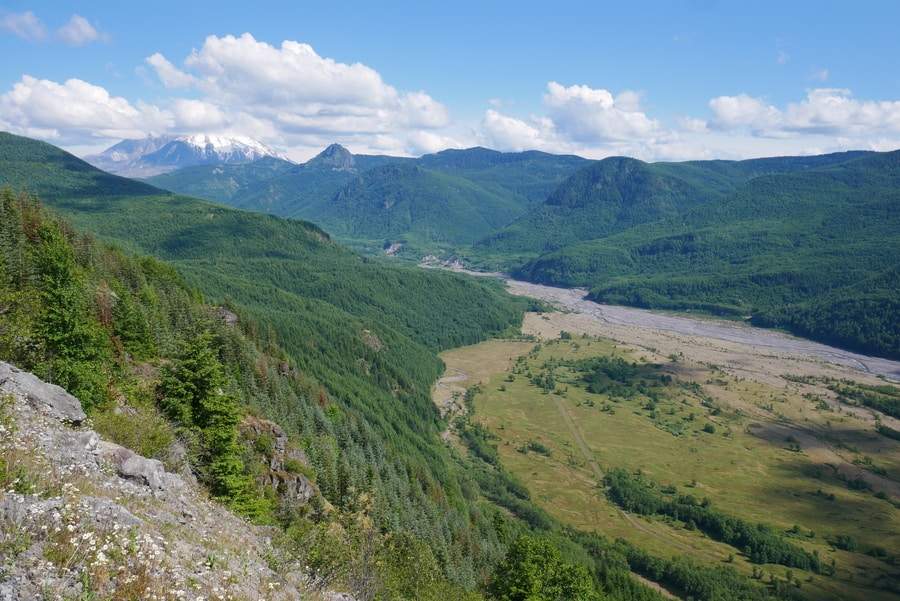
When Dan and I chose to take a day trip from Seattle to Mount St Helens, we knew we would have to prioritize certain aspects of our visit. We researched the best hiking trails in Mount St Helens and mapped out the monument’s most scenic viewpoints.
In the end, our day trip to Mount St Helens consisted of a stop by the Johnston Ridge Observatory, and a breathtaking hike along Harry’s Ridge Trail.
JOHNSTON RIDGE OBSERVATORY
The Johnston Ridge Observatory was named for a volcanologist who lost his life during the Mount St Helens eruption. He was one of the 57 people who perished that day.
The observatory lies at the terminus of State Highway 504, in the heart of the volcano’s blast zone. Its viewing platform provides up-close access to the park’s geology. The viewpoint is wheelchair accessible and offers a direct look into the crater.
Access to the area requires an $8 per person Monument Pass.

The visitor’s center at the Johnston Ridge Observatory hosts interpretive displays that tell the story of Mount St. Helens and its eruption. The center’s interactive exhibits allow visitors to learn more about the area’s unique geology and history.
HARRY’S RIDGE TRAIL
Like the Johnston Ridge Observatory, Harry’s Ridge Trail was named after a victim of the volcano’s eruption. Even prior to his death, the victim—Harry R Truman—was a bit of a local legend. A prohibition bootlegger, petty criminal and collector of cats, he was a man who lived by his own rules. In the weeks leading up to the explosion, scientists and researcher were unsuccessful in convincing Truman to evacuate the area. Despite dire signs of an imminent eruption, Truman refused to leave his home at the edge of Spirit Lake. “If the mountain goes. I’m going with it,” he’d stated.
And on that fateful day in 1980, Harry became true to his word. He and his sixteen cats perished in the onslaught.
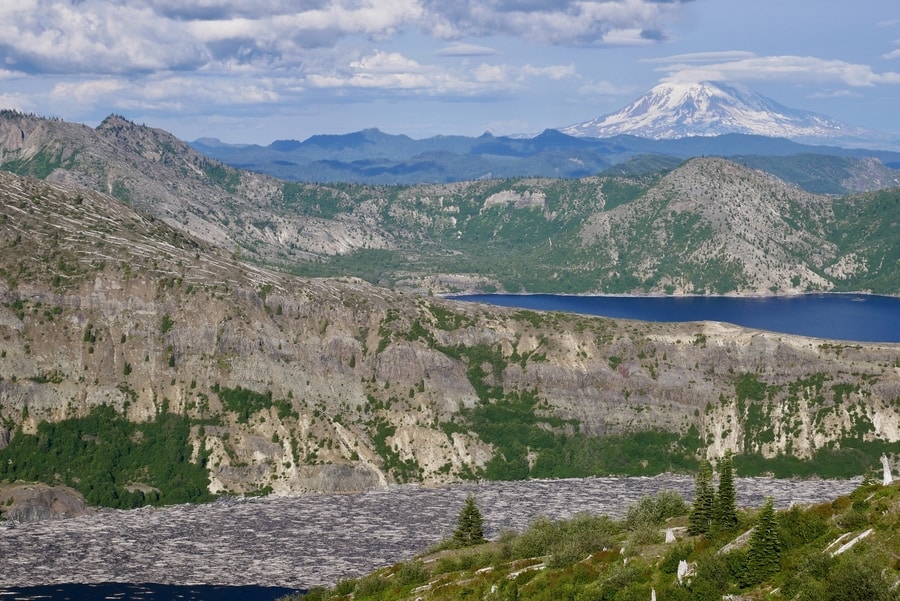
Harry’s Ridge Trail is one of the most popular hikes in Mount St Helens. It begins at the Johnston Ridge Observatory and extends just over four miles in each direction. For travelers visiting the mountain as a day trip, it is a comprehensive hike that features many of the national monument’s most scenic views. Revealing birds-eye panoramas of the park’s altered landscape, Harry’s Ridge Trail showcases the splendor—and legacy— of the mountain that Harry Truman so dearly loved.
The 8.5 mile out and back trail follows a ridge line and rises at a gradual incline. It is well-maintained and doesn’t require any technical hiking skills.
Throughout the duration of the hike, the trail gives way to intimate views of the Mount St Helens crater and mudflow, before turning inward and climbing gradually up the back side of Harry’s Ridge.
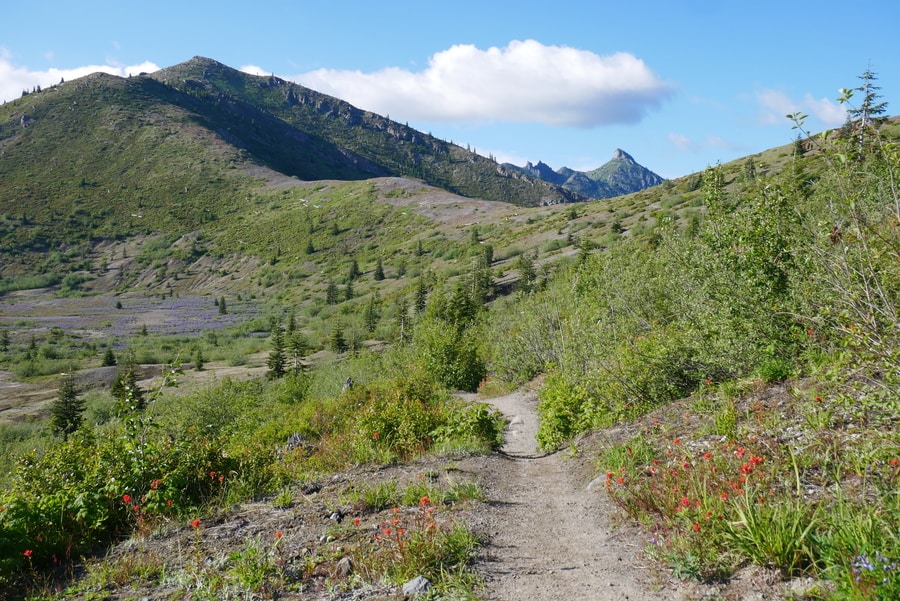
The end of Harry’s Ridge Trail rewards hikers with commanding views of Spirit Lake.
Beyond, its spectacular panoramic vista highlights Mount Adams to the east, Mount St Helens to the south, and Coldwater Peak to the north.
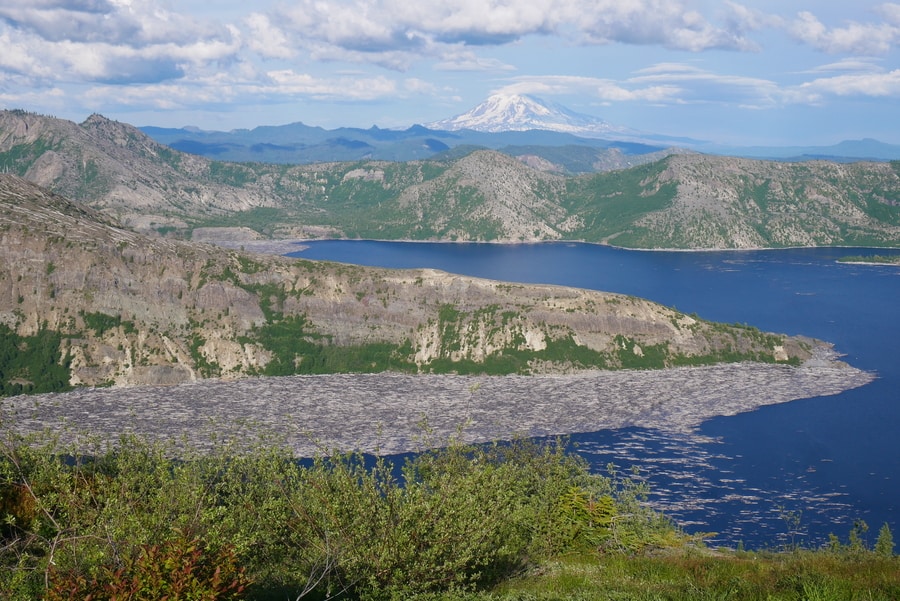
Spirit Lake is the main body of water visible from the end of Harry’s Ridge Trail. The lake has an interesting history, as it has been shaped and altered by volcanic activity for its entire existence.
The lake originally formed when rock fragments dammed two creeks in the area. But then, in 1980, a debris avalanche from the Mount St Helens eruption temporarily displaced much of the lake from its bed. Spirit Lake’s surface area increased in size after the displacement, spreading out its waters to cover an additional 2,000 acres.
The blast deposited thousands of pyrolized trees into Spirit Lake. These shattered trees formed a floating log raft on the lake’s surface. Four decades after the event, the log raft still floats around the northern reaches of the lake.
HIKING MOUNT ST HELENS
Mount St. Helens is a popular climbing destination for both beginning and experienced mountaineers. All routes to the top of Mount St Helens include sections of steep, rugged terrain.
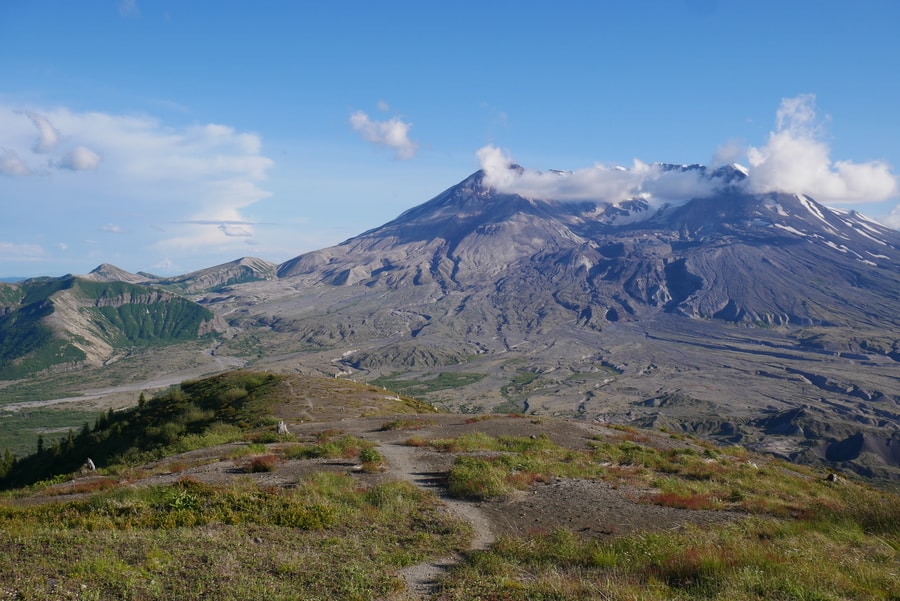
Though climbing Mount St Helens does not require technical skills, hikers must obtain a permit from Recreation.gov. Permits are mandatory year-round for anyone who desires to climb above an altitude of 4,800 ft.
I did not include a hike up Mount St Helens in my day trip itinerary due to limited time and lack of advanced planning, but I hope to summit its cratered peak at some point in the future.
APE CAVE
Ape Cave is the longest lava tube in the United States and a popular Mount St Helens attraction. Similar to the Lava River Cave in Central Oregon’s Newberry Crater, Washington’s Ape Cave is a subterranean passageway formed by molten lava.
Ape Cave lies at the opposite edge of the national monument from the Johnston Ridge Observatory. Since roads do not connect the two destinations, it can be difficult to include Ape Cave into a Mount St Helens day trip itinerary.
Travelers interested in visiting the Ape Cave Lava Tube are better off touring the attraction as part of a separate trip, or as part of a multi-day Mount St Helens visit.
***
Mount Saint Helens National Volcanic Monument is one of the most geologically fascinating destinations in the Pacific Northwest. The mountain is a living laboratory and an enduring reminder of nature’s power.
Mount St Helens lies in the Cascade Mountain Range, between Mount Rainier and Oregon’s Mount Hood. It is one of three national monuments in Washington State—along with Hanford Reach and the San Juan Islands,
Visiting the national monument as a day trip or weekend trip is a fantastic escape into one of Washington State’s premier attractions. It is an educational outing that provides insight into the geological forces at play in this active and ever-changing corner of the Pacific Northwest.
__________________________________
Did You Enjoy this Mount St Helens Day Trip Itinerary? Pin It!
